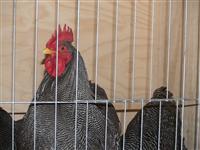
Want to work or move up in the poultry industry?
Thinking of running a poultry farm?
Or do you just want to know all there is to know about your backyard hens?
This course covers in detail the management of all types of poultry: Chickens, Turkeys, Geese and Ducks including:
- Terminology
- Breeds
- Nutrition
- Diseases In Poultry
- Layers
- Broilers
- Incubation
- Brooding
- Record Keeping
- Economics & Marketing.